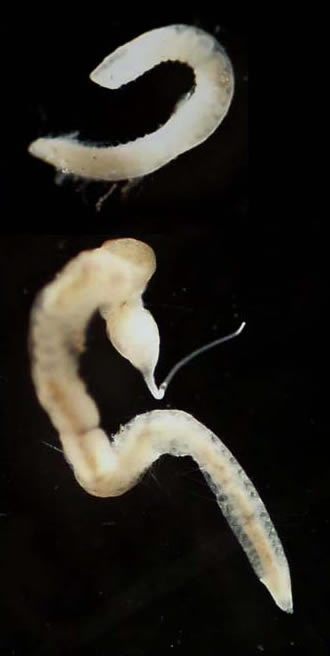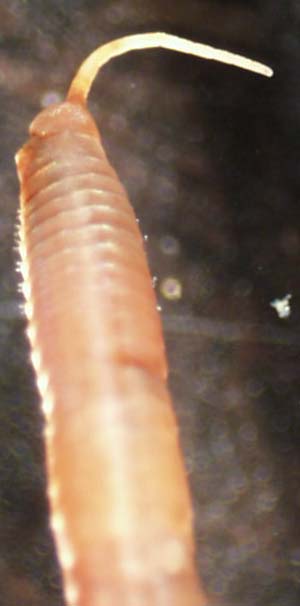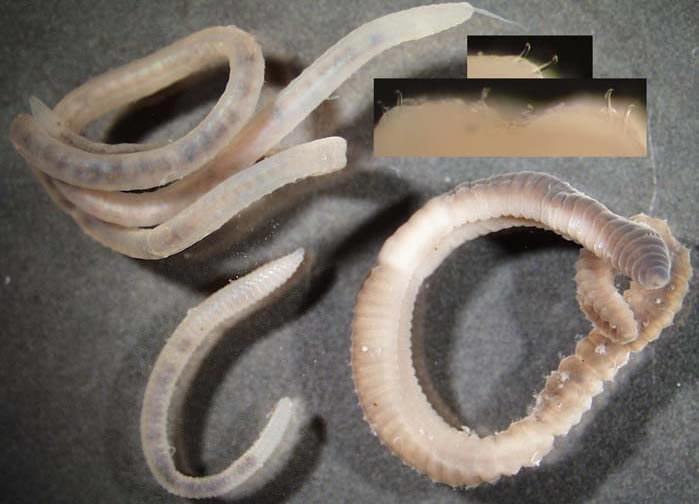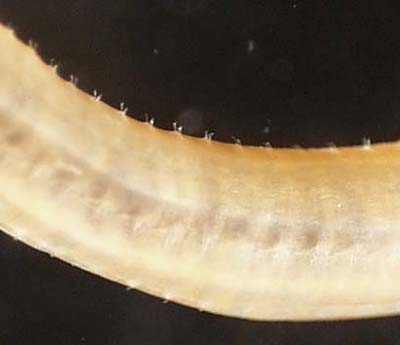
THE XERCES SOCIETY FOR INVERTEBRATE CONSERVATION Aquatic Invertebrates in Pacific Northwest Freshwater Wetlands |
| Identify taxa |
Oligochaeta |
Oligochaeta and Polchaeta are classes in the phylum Annelida, which also includes the Branchiobdellida (crayfish worms) and Hirudinea (leeches). The Oligochaeta include typical earthworms and their aquatic relatives. Oligochaeta are found in silty substrates and debris in ponds, lakes, streams, and rivers. Some are specialized, inhabiting algal mats or the edges of water bodies. The class Oligochaeta also includes the tubificid worms, which build vertical tubes from which the end of the worm protrudes and waves about. Tubificids may be found in lakes and can tolerate low levels of oxygen. Not much is known about wetland Oligochaeta. We collected Oligochaeta in the family Lumbricidae in a study in Oregon. Specimens in samples are regularly damaged and often immature, making identification difficult. For the purposes of macroinvertebrate monitoring, they are usually only identified to class (Oligochaeta). The Oligochaeta are easily distinguished from other annelids and invertebrates. They have elongated tubular bodies with numerous body segments, most of which have tiny spines called chaetae. Some have long noses; others have relatively long hairs or are covered in small bumps. Efforts are underway to develop an easy-to-use key to these worms for use in macroinvertebrate monitoring. |
Size: small to xlarge |
 |
|
© 2007 Xerces Society
Contact info@xerces.org







